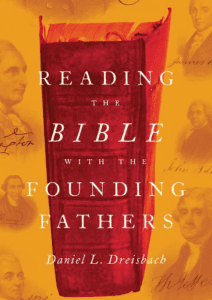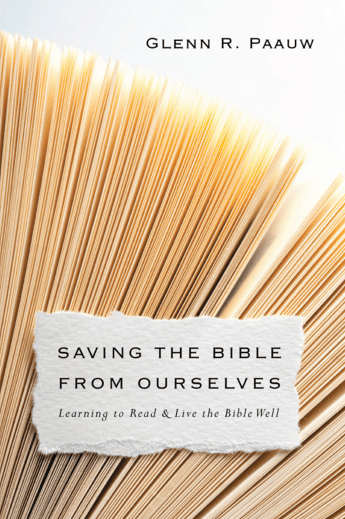 What does it mean to take scripture seriously?
What does it mean to take scripture seriously?
Is literalism the only faithful approach?
The third chapter of Ronald E. Osborn’s new book Death Before the Fall: Biblical Literalism and the Problem of Animal Suffering looks at the unwholesome complexity (his chapter title) that can arise from a rigorously literal approach to scripture.
He begins by pointing out that we all pick and choose when it comes to literalism. Many young earth creationists will point out that the Hebrew word yom in Genesis 1 almost certainly refers to a literal twenty-four hour day … And there was evening, and there was morning – the first day. Because the text refers to a literal day we are bound, so the argument goes, to a literal six-day creation and a young earth.
Of course, we also find in scripture many references to God’s hand. Clearly the word used in the text means a real literal hand. Yet few who argue that the literal reading must take precedence for “day” in Genesis 1 will also argue that God has a hand with four fingers, a thumb, and fingernails. (Although the image appears in a Christian artwork at times, as in the relief above ca. 700 AD where the hand of God stops Abraham from sacrificing Isaac.) As Osborn puts it:
Pointing out that yom in Genesis semantically means “day” hardly settles the question of what kind of literature Genesis is, how it ought to function in the life of Christian faith, or what it is actually bearing witness to as far as scientific questions are concerned. (p. 49)
And a little later he elaborates on the problems introduced by a strict literalism:
The greatest problem with strict literalism’s “plain” reading approach to Genesis, however, is that it is not plain or literal enough. Creationists have treated Genesis as a story that is all surface with no depth that must now be validated or “proved” through – irony of ironies – the tools of a thoroughly rationalistic, quantifying and materialistic science. But the demand for scientific and historical correspondence – the criterion of “truth” demanded by modern, post-Enlightenment minds – introduces unwholesome new layers of complexity to our readings. These layers are not located inside the text, drawing us into its mysterious and undisclosed depths as I have attempted to do in my reading in Chapter one, but rather are piled on top of the story from without, strangling its poetic and doxological heart. (p. 52)
Literalism simply isn’t possible. Attempts to hold fast to a literal interpretation lead to a multitude of speculations, twists and contortions – from the crystalline canopy theory (here) to the suggestion that the plants of Genesis 1:11-12 didn’t include agricultural plants because these were only created after Adam as we read in Genesis 2:5-8.
The two creation accounts in Genesis 1 and 2 provide an excellent case in point. Osborn works through attempts that have been made to force these into scientific and chronological agreement, flattening them into a single linear historical narrative. Apparently in the sixth day God created the land animals, then Adam, then the (agricultural) plants, then after noting that it was not good for Adam to be alone, brought the animals and birds out of hiding (since they had all been created before Adam in the Genesis 1 account) and paraded them before Adam to be named. As there are only 60×24=1440 minutes in the day this must have been a super-speed process … So the man gave names to all the livestock, the birds in the sky and all the wild animals (Genesis 2:20) … thousands of species, according to a strict literalism. Then and only then was the woman created (also a first-day product setting a limit on the time available for the naming process).
In any case, we must somehow make Genesis 2 say something other than what the text very plainly appears to say, not because we are really concerned with listening to the story on its own terms as a theological narrative but because we have a prior commitment to an uncompromising and thoroughly modernist understanding of what counts as “truth,” so that all other textual question must now be subordinated to the task of producing absolute scientific and chronological harmony – no matter what the texts say. (p. 56)
This push for harmony has even crept into a few translations, including the NIV where we read in 2:19 “now the Lord God had formed out of the ground all the wild animals” without even a footnote acknowledging that most scholars think that the better translation is that of the HSCB (KJV, NASB …) “so the Lord God formed out of the ground every wild animal,” referring to an act of creation after the formation of Adam. But this is a problem as it is not in harmony with the creation order found in Genesis 1. The ESV agrees with the NIV, but has a footnote with the alternative.
The real problem, though, is the one that Osborn highlights. The push for a strict literalism, and the contortions that this commitment requires, takes us away from a true appreciation for the power and message of scripture.
Is it in fact the authority of Scripture in all of its richness, power, and often enigmatic and untamable diversity that we are being asked to be faithful to? Or rather a rigified mental system and the unquestionable authority of its self-appointed guardians at any cost? (p. 58)
Unwholesome complexity. Genesis 1 is a doxological presentation of the wonder of God’s good creation. It is a powerful passage of scripture and an excellent place to start. It is not a scientific treatise or a historical chronology. Genesis 2 paints a different picture. The earth is something of a barren wasteland (no plants, no animals, …) when God created Adam. He prepared a place for him, planted a garden, gave him work to do, produced animals for companionship, and ultimately brought forth a woman as a suitable companion and instituted marriage. Again a powerful passage with an important message. Both of these pictures of creation are important, but they should not forced into scientific and chronological harmony.
The Bible is a complex, multivocal book written and compiled in many different times and places by many different people reflecting their encounters with God. Scot has an excellent discussion of this in The Blue Parakeet: Rethinking How You Read the Bible. The intrinsic complexity, what Osborn calls its “untamable diversity,” is part of the power of scripture. Every time we return to the text there is something new, a depth of meaning, a nuance, an insight, that went unrecognized the previous time. Unwholesome complexity comes when we try to shape scripture into the book that we think it should be rather than immersing ourselves into the story to be formed by God’s message and work in the world.
If you wish to contact me directly you may do so at rjs4mail[at]att.net
If interested you can subscribe to a full text feed of my posts at Musings on Science and Theology.











